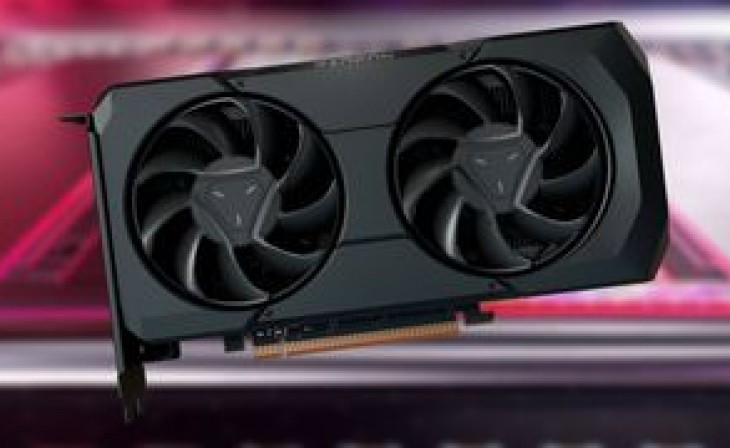The RX 7600 XT: AMD's First Graphics Card of 2024
Specifications Overview
The RX 7600 XT utilizes the Navi 33 graphics chip, maintaining the same number of shaders and memory controllers as its predecessor, the Radeon RX 7600. This means it boasts 2,048 shaders and a 128-bit combined memory bus width. However, AMD has made key improvements to elevate its performance.
Also check Intel Z790 Motherboard Roundup: Evaluating 11 Motherboards
Clock Speed Boost
One of the most significant upgrades comes in the form of clock speeds. The Game clock has been raised by 220MHz, from 2.25 to 2.47GHz, marking a notable 9.8% increase. Additionally, the Boost clock sees a 100MHz bump, going from 2.66 to 2.76GHz, providing a 3.8% improvement. While the VRAM's clock rates remain unchanged, maintaining a transfer rate of 18Gbps.
Power Consumption
The enhanced clock speeds and increased VRAM do have an impact on power consumption. The RX 7600 XT requires more power than its predecessor, with a total board power of 190W, compared to the RX 7600's 165W. Despite this increase, the card should still only need a single 8-pin PCIe power connector for compatibility.
Third-Party Models
It's important to note that there won't be a reference Radeon RX 7600 XT from AMD itself. Instead, third-party manufacturers like Sapphire and PowerColor will produce their own variations of the card. While it's not entirely clear from available images, it's reasonable to assume that only a single power cable will be necessary for these models.
Improved Performance
With the combined enhancements of higher clock speeds and increased VRAM, AMD claims that the RX 7600 XT delivers notable performance gains, especially at 1440p resolution. Depending on the specific game, these gains range from 6% to an impressive 31%. The most substantial improvement is observed in titles like Forza Horizon 5, particularly when utilizing maximum ray tracing settings.
An Unconventional Comparison
Interestingly, when AMD introduced the RX 7600 XT, they opted to compare it to Nvidia's older GeForce RTX 2060. This choice may seem unconventional, considering the RTX 2060 is four years old and two generations behind the latest GPUs. However, AMD's rationale for this choice is based on the fact that 50% of GPUs in the November 2023 Steam Hardware Survey were RTX 2060 or slower models. Despite its age, AMD is targeting gamers seeking an affordable GPU upgrade.
A Budget-Friendly Option for Content Creators
In addition to its gaming capabilities, AMD is positioning the RX 7600 XT as an attractive option for budget-conscious content creators. This includes those who rely on local generative AI systems for their work. By offering both gaming performance and affordability, AMD aims to cater to a diverse range of users with this graphics card.
AMD's RX 7600 XT: A Game Changer for 2024
AMD is starting the year 2024 with a bang, unveiling the RX 7600 XT graphics card as the latest addition to their Radeon lineup. Boasting an impressive 16GB of GDDR6 VRAM and several enhancements to its specifications, this GPU is set to make waves in the gaming and content creation worlds. Let's take a closer look at what the RX 7600 XT brings to the table.
Key Specifications
Under the hood, the RX 7600 XT houses the Navi 33 graphics chip, maintaining the same shader count and memory controllers as its predecessor, the Radeon RX 7600. This means it retains 2,048 shaders and features a 128-bit combined memory bus width. However, AMD has not rested on its laurels and has made crucial improvements to enhance performance.
Turbocharged Clock Speeds
One of the standout upgrades is the boost in clock speeds. The Game clock has been upped by an impressive 220MHz, soaring from 2.25 to 2.47GHz, resulting in a substantial 9.8% performance increase. Additionally, the Boost clock receives a 100MHz boost, elevating it from 2.66 to 2.76GHz, providing a 3.8% performance bump. While the VRAM clock rates remain unchanged, maintaining a transfer rate of 18Gbps.
Power Consumption Considerations
The enhancements in clock speeds and VRAM come at a cost, namely an increase in power consumption. The RX 760




